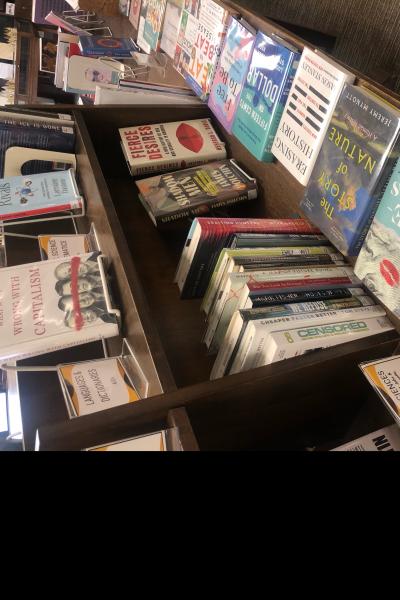
[syn=9780199933877]
[syn=9781596913929]
[syn=9780307907301]
[syn=9780199592265]
[syn=9780061726880]
[syn=9781583333570]
[syn=9780521763844]
[syn=0309093120]
[syn=9781582437606]
[syn=9780465009497]
[syn=9780307907301]
[syn=9780618826124]
[syn=9781426202131]
[syn=9780312353551]
[syn=9780061137914]
[syn=9780742551169]
Climatic change is a hot topic, considered the reason for the current drought across much of the country, the cause of the North American cold wave this past winter in the Eastern United States, and the explanation for the Western Antarctic ice sheet beginning to collapse….which will ultimately change coastlines worldwide as sea levels rise. These featured titles examine this situation, and they survey what challenges we will be facing.
Overheated: the human cost of climate change by Andrew T. Guzman (363.738 G993)
The author explores the real-world consequences of climate change, e.g. unprecedented migrations, famine, and war. Two extensive chapters in the book, “Deeper Waters” and “A Thirsty World” examine the situation throughout the world. Guzman shows how climate change is already playing out. He notes that as seas rise, melting glaciers will deprive millions of people of fresh water, and strain food production. In the author’s words: “Two degrees Celsius seems like a relatively minor increase, but its impact is likely to be staggeringly large”.
The great warming : climate change and the rise and fall of civilizations by Brian Fagan (904.5 F15)
Fagan examines how previous global warming phases reshaped various human societies. He notes how the earth experienced a rise in surface temperature that changed climate worldwide from the tenth to the fifteenth century. He describes how, during that time, Western Europe’s longer summers brought bountiful harvests and population growth. At the same time, the warm centuries brought drought and famine to populations in the Yucatan and Central America. The author sees this medieval Great Warming as a preview of today’s situation.
Global weirdness : severe storms, deadly heat waves, relentless drought, rising seas, and the weather of the future [produced by Climate Central] (577.22 G562)
Climate Central provides an ideal introduction to the facts about global warming. This book, comprised of some sixty concise and easy-to-read chapters, summarizes all aspects of a complicated topic in non-technical language. It explains in practical terms what natural forces caused climate change in the past, and what is likely to happen to our climate in the future.
Waking the giant : how a changing climate triggers earthquakes, tsunamis, and volcanoes by Bill McGuire (551.6 M148)
The author looks back at the Earth’s past to see what our future holds. McGuire discusses the links between the Earth’s climate and its intricate geological processes, and how they interact. For example, he describes how rising temperatures melted the great ice sheets, which in turn sent torrents of freshwater into ocean basins. The latter filled to present levels, causing the Earth’s crust to bounce back, which triggered extensive earthquakes. McGuire’s interpretation of the complexities of earth science is captivating reading for the non-specialist reader.
The weather of the future: heat waves, extreme storms, and other scenes from a climate-changed planet by Heidi Cullen (551.6 C967)
This fascinating book predicts how climate change will transform every corner of the world by midcentury if current levels of carbon emissions are maintained. The study predicts global warming scenarios for seven of the most at-risk locations, such as the Central Valley of California and Greenland. The author uses climate-model projections to create climate-change scenarios and forecast tomorrow’s weather. The author paints a gloomy picture of what’s in store for our planet, but offers suggestions about what we can do today to avoid catastrophe.
A world without ice by Henry Pollack (551.31 P77)
This insightful and very readable work examines the impact of ice on Earth, our climate, and humanity. The historical starting point of the book is the third chapter, “When Ice Ruled the World”. The “warming up” period follows up to the seventh chapter entitled “Melting Ice, Rising Seas”. Geologist Pollack envisions that, in only a few decades, the Arctic Ocean may be ice-free in the summer. He brings attention to the serious dangers caused by climatic change, such as melting glaciers reducing the supply of water for drinking and for agricultural irrigation. In other words, the author reminds us what life on Earth will be like without poles and glaciers.



